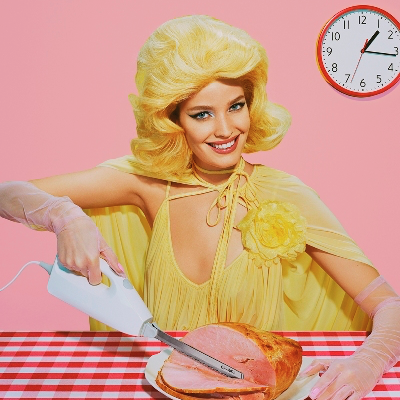Susan Rothenberg
Susan Rothenberg (United States, 1945–2020) was a contemporary painter renowned for her large-scale, monochromatic horse paintings that bridged abstraction and representation. Her work evolved to include human figures and animals, exploring movement and form. Rothenberg received a Guggenheim Fellowship in 1980 and exhibited at major institutions worldwide.

Artwork by Miles Aldridge
What is contemporary art?
Contemporary art refers to avant-garde or innovative art created in the recent past or present day. The exact starting point of contemporary art varies depending on the institution, often tied to the founding year of museums or galleries that showcase the style. Contemporary art is characterized by its focus on current ideas, diverse media, and the exploration of new concepts and techniques.















